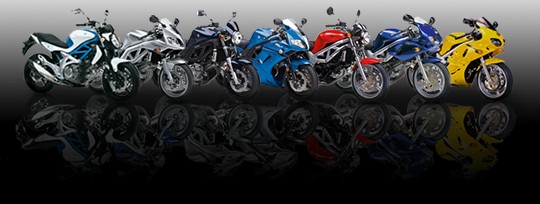 |
 |
|
|
#31 |
|
Guest
Posts: n/a
|
Just thought I would throw my 2 cents in:
I figure it's like this: the drag force exerted is (CD * rho * A * v^2) / 2 , where CD is the drag coefficient, rho is the air density, A is basically the area exposed and v is your speed. Assuming you don't change the area (to which you contribute also), as in when you're completely tucked behind the wind screen, and that the CD stays basically the same, it seems the amount of stopping force is squarely dependent upon the speed. Now that we have one force we just need to figure the other one out, which is at which gear and rpm would the engine produce an equal amount of force for a given speed. Then we would need to also see how that translates to fuel consumption. Now I don't buy the argument regarding torque, as that is in no way related to engine efficiency (engine efficiency is calculated as which percent of the energy generated by the fuel explosion is actually being put to good use), hence, you might be getting a lot of torque at peak torque, but it does not mean that you are actually using a lot of the fuel to defeat drag force(you might be burning a lot of fuel to get a certain amount of energy). This is one of the reasons accelerating is so bad for fuel economy: engine efficiency goes down, so defeating drag force and other forces as well e.g. you're own weight going uphill, consumes a lot more fuel. So let's see how the formula looks.. you take the energy generated by burning fuel, you use it to expand the gas in the engine in a given amount of time. This converts to force applied by the piston to the crankshaft (you lose some force there..), which goes through the gears(you lose some force there..), to the back wheel, where it is divided by the radius of the wheel, encounters friction to the ground and what's left of it fights off drag force.. This generates, depending on the engine, a certain amount of fuel consumed to keep a steady speed (at a certain engine efficiency -to be read rpm + fuel/air mixture- and a certain gear) for .. say 1 sec. Now, your keeping a certain steady speed, so this consumption per second is then translated to how many miles you do in an hour using how much fuel... Which is then converted easily to the mpg we're all searching for. Now I don't think I'll take the actual calculations to an actual exact formula. That would be pointless, as many factors vary by much - engine efficiency goes down through time, the amount of force you lose to crankshaft and gear box increases over time and tire condition comes to play (because that affects the amount of friction you encounter at the wheels - both front & back). drag force doesn't really change in time (unless you stick your head above the windshield), but that's one constant in a sea of variables... For keeping a high mpg I'm positive you have to keep tucked behind the windshield (closing a car's windows increases fuel economy by 10% - 15%), but other than that my post is absolutely worthless.. Well, that was it.. if anyone feels like it, go ahead and do the formula Last edited by andreis; 03-06-09 at 06:06 PM. |

|
|
|
#32 | |
|
Guest
Posts: n/a
|
Quote:
Excellent post though Andreis, outlines all the factors that need to be taken into account, I tried googling but I was being harassed by muppets at work so didn't find anything useful just the usual conjecture and postulation |
|

|
|
|
#33 |
|
Guest
Posts: n/a
|
Thanks, but I think I missed a big one though.. Engine efficiency is also highly dependent on engine temperature, but as we're talking highway running, it shouldn't be a problem. But for those of us interested in work commuting, this has a big impact as you don't typically get the engine warm enough in a 3-5 miles drive.. This is probably why someone using the bike for a lot of short distance travels gets bad mileage..
|

|
|
|
#34 |
|
Guest
Posts: n/a
|
A big fat 14 stone me in a floppy suit would have to travel slower for the same force than someone 10stone + in a leather suit'
I'm sure i got a few miles more per tank when I could fit in my leathers in summer |

|
|
|
#35 |
|
Guest
Posts: n/a
|
My sv on long motorway runs has achieve 70mpg @ 70mph.....then again it is restricted. It works out at a theoretical 256 miles to a tank. I haven't put that theory to the test yet.........256 miles on one full tank.
I've got too much free time |

|
|
|
#36 |
|
Guest
Posts: n/a
|
It's not just drag you have to take into account. Don't forget the friction between road and (hopefully) tyres.
|

|
|
|
#37 |
|
Guest
Posts: n/a
|
Hmm.. I did account for that. Which is to say I mentioned it. Nothing is actually accounted for as there is no formula posted yet..
As Trumpet said, we'll all get on our bikes, from a standstill with a full tank. Divide into .. say 4 groups of at least 5 (that would mean at least 20 drivers). Group 1 will do 3rd gear, group 2 will do 4th and so on. We'll divide the range speed of each group into 5 equal sections and each rider will ride into his/her own section. The one to get the furthest answers Brettus' question... But better yet, we just keep riding safe for years and figure it out in time Except for those special days(most of them) when you say "the hell with mileage" and twist it for the extra smile |

|
|
|
#38 |
|
Guest
Posts: n/a
|
oops, soory, missed the last page of the thread. just thought i'd mention it as i hadn't noticed it elsewhere and my mech eng background got the better of me.
|

|
|
|
#39 | |
|
Noisy Git
Mega Poster
Join Date: Apr 2007
Location: Halifax/Leeds
Posts: 26,645
|
Peak torque happens at the point in rev range where BMEP is at maximum. BMEP is a function of how efficiently the fuel is burned and the volumetric efficiency of the engine. Of course, frictional losses also come into play, so cruising at 10krpm on a "hot" engine won't be good either.
So, an engine with hot cams (bike engine), at 2000rpm will spit loads of fuel out through the exhaust ports and generally stutter and whinge. You'll need loads of throttle to get anywhere at reasonable speed, and because of that, you'll use loads of fuel. When you want to accelerate, use light throttle a little higher in the rpm, where the cams are going to be about right. When cruising, use the gear that means least throttle opening. Probably the highest one to put the engine at the lowest revs where it 'feels' happy. Quote:
Cd is also a function of Reynolds number so it also varies with speed, but since it's only ^1 and the velocity is ^2 then velocity will be the main defining factor.
__________________
Currently Ex Biker
Now rebuilding a 63' fishing trawler as a dive boat |
|
|
|

|
|
|
#40 | |
|
Noisy Git
Mega Poster
Join Date: Apr 2007
Location: Halifax/Leeds
Posts: 26,645
|
Quote:
__________________
Currently Ex Biker
Now rebuilding a 63' fishing trawler as a dive boat |
|
|
|

|
 |
|
|
 Similar Threads
Similar Threads
|
||||
| Thread | Thread Starter | Forum | Replies | Last Post |
| Most economical family car - Which? | krhall | Idle Banter | 15 | 18-03-08 09:08 PM |
| Most economical fast bike? | Stu | Bikes - Talk & Issues | 51 | 05-06-07 11:38 AM |
| Economical Driving | krhall | Bikes - Talk & Issues | 32 | 27-03-07 01:36 PM |
| Motorway fun | rpwoodman | Idle Banter | 6 | 02-11-06 10:39 AM |
| Most economical motorway speed? | thor | SV Talk, Tuning & Tweaking | 29 | 23-01-06 02:28 AM |